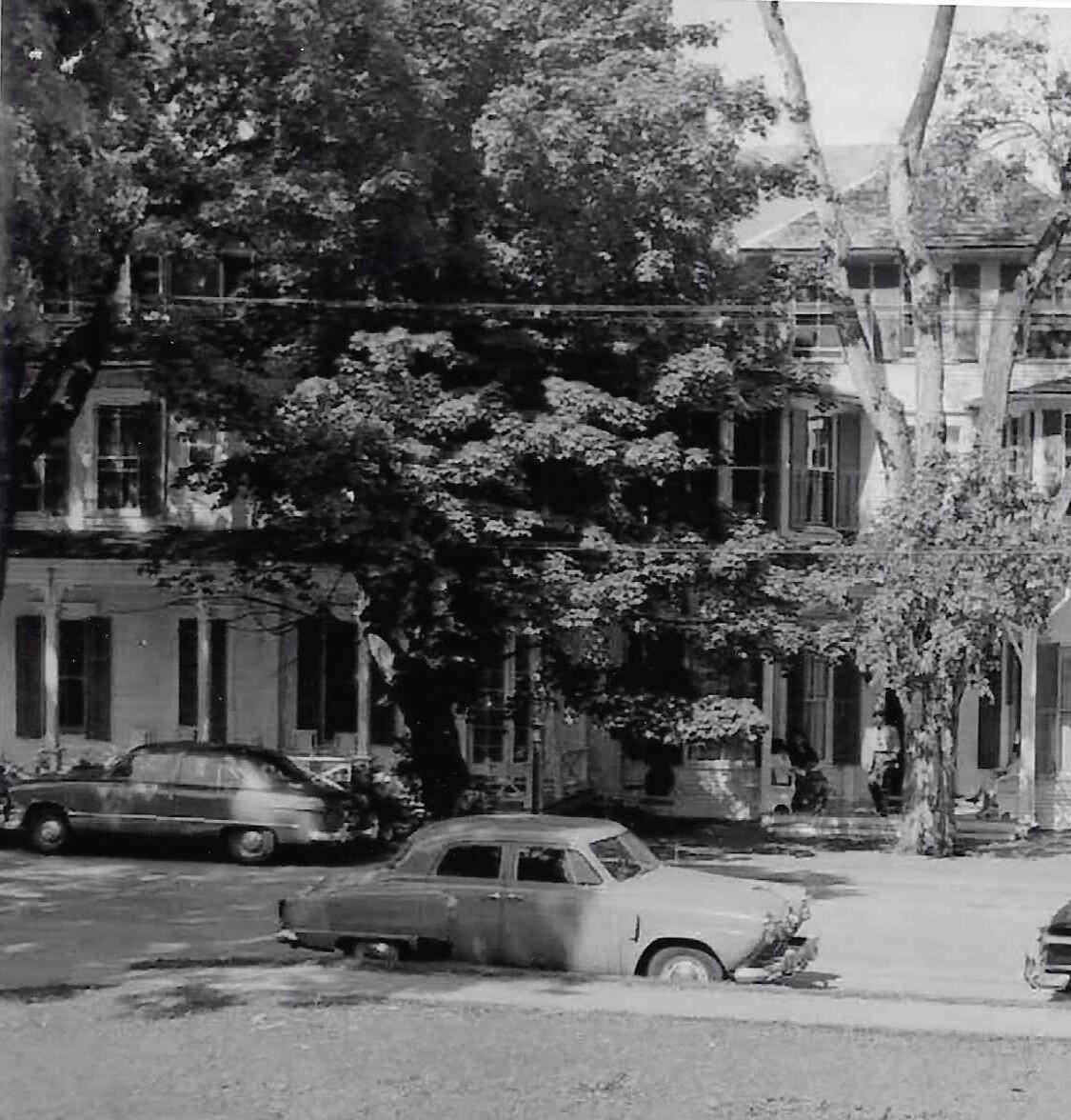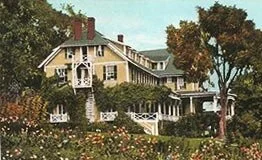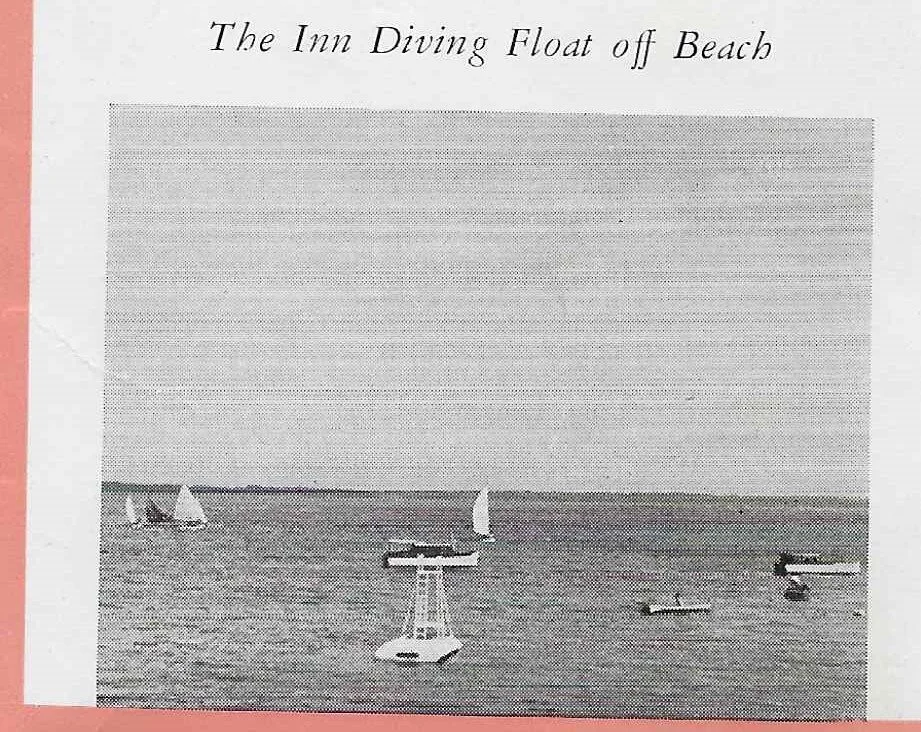History of Ballard Park.
Ballard Park was once the location of The Westport Inn, one of the most gracious grand hotels of the Adirondacks and a focal point of Westport summer life. The Inn was demolished in 1967 and the property purchased by Anne Ballard ("Petey") Cerf, a long-time summer resident. Through her visionary philanthropy, Ballard Park was established in 1989, named in honor of her parents. Ballard Park serves as a park in the Adirondacks with lake and beach access, a summer concert series, and a skating rink, that is open to all.
Westport Inn 1893
Main Street and Westport Inn South Side
Westport Inn from Main Street Circa 1950's
Westport Inn Main Street View
Westport Inn Main Street 1911
Westport Inn Full Back View
Changed Plans. Here for rest of summer. 1909
Westport Inn South Flower Garden
Garden view of the Westport Inn
Westport Inn Terrace
Westport Inn South Lawn
Westport Inn South Side Grounds
Flower Garden
Westport Inn Flower Garden
Westport Inn Lawn Games
Westport Vegetable Garden Ploughing
Westport Inn Tennis Court & Boat House
Looking down from the hotel's grand covered patio.
Westport Inn boathouse.
Westport Inn & Boat House from lake view.
Beach at the Westport Inn
Westport Inn Beach Circa 1960
Boathouse and dock at the Westport Inn
Postcard of the Westport Inn beach.
Westport Inn Diving Float
Wesptor Inn Beach
Vintage Post Card 1907
Lake Champlain from the Westport Inn
Post Card Script Westport Inn 1911
Westport Inn Post Card 1907
Main Street Westport and Westport Inn Sign Circa 1955
Westport Inn Fireplace
Westport Inn Main Dining Room
Westport Inn Lounge
Westport Inn Cocktail Lounge
Westport Inn 1913
Westport Inn Demo 1967
Westport Inn Demolition 1967

Recollections of the Westport Inn: 1930 through 1950 by Jerry Uhl
The Inn had been through many phases before I knew it. Some of these I heard about from family members who had known it first hand. The Inn had existed in one form or another since the latter part of the 19th century. It had consisted of a series of different buildings, at least two of which had burned down and been replaced with larger ones. According to my family, the hey day of the last and largest Inn was during the 1920s and early 1930s.
Up until its last years the Inn was the center of activity for Westport's "summer people". I remember it as being full of people of all ages with a whole array of activities that began with the departure of the fishing parties at dawn and continued well past mid-night. It was an exciting place where you knew you would find your friends and something to do.
The Inn itself, its cottages, out buildings and grounds were well kept up. The gardens were tended daily and the beach was raked twice a day. The gardens were magnificent and occupied almost the entire area between the Inn and the Garden Cottage. In the center of this area were a putting green and a croquet field. Below the street level a path led from the Inn porch past the Elm Cottage and tennis court to the boathouse and beach. Just above the beach were badminton courts and shuffleboard. All were in almost constant use.
The beach was the center of activity for the younger set for swimming, boating, sunning or hanging out. The swimming was great. The bottom was sandy and clean, hardly any weeds or algae, and no one paid attention to the exposed pipe that carried sewage out into the lake.
The boathouse was a wonderful building, set up on concrete piers above high water, with a wooden ramp leading to the water for boat launching and retrieval. The first floor was used for boat storage and a small corner room occupied by the lifeguard and used by all for changing clothes. The boats were canvas covered wooden canoes and guide boats. The second floor, originally a salon with open balcony overlooking the lake, had been converted into a painting studio in the 1940s by the Inn's then owner.
The view of the lake was much different then. No boats were moored south of the marina (then called the "Town Dock") and there were no wave breaks. The small beach south of the marina and boathouse was strictly controlled by the Inn. There were only a few motorboats resident at the marina and sailboats were a variety.
In the early 1940s the "Ticonderoga", now at Shelburne Museum, made weekly stops at the marina dock to pick up Inn guests and others for a day trip up or down the lake.
The Inn building was fairly typical of Adirondack hotels of its era. A 3 -story wooden structure with wide porches and high ceilings, it had in recent times been fitted out with an elevator and a sprinkler system.
The first floor (at Main Street level) contained lobby. Front desk, office, salon, card and game rooms, dining room and kitchen. Guests' rooms occupied the upper floors. The original basement had been converted into a bar and grill with a large terrace opening onto the lawn overlooking the tennis court and sheltered by the porch above.
During the 1940s and early 1950s the bar and grill provided live music and dancing every night with a full band Saturdays and a piano player, on other nights. For those preferring quieter pursuits, there was bingo, shipboard horse racing (with pots in excess of $100.00), bridge, music recitals and an occasional musician for the younger crowd. The game room contained a ping-pong table, pinball machines, and other similar pastimes. At least twice a month there were exhibits of work by local artists and craft shows exhibiting a variety of articles made in the region.
For those of us who knew it, the Inn's demise has left a void in Westport that has not been filled to this day. Although the Inn and the life style of that time can never be brought back, Ballard Park can bring new life, activity and excitement back to the center of Westport.
— Jerry Uhl








































